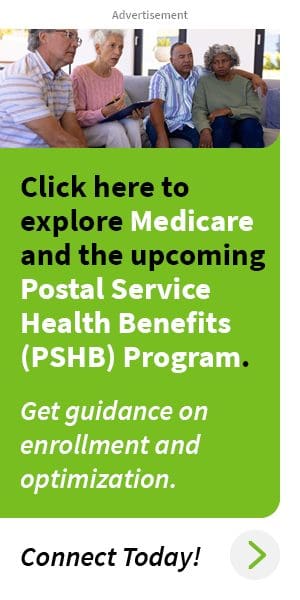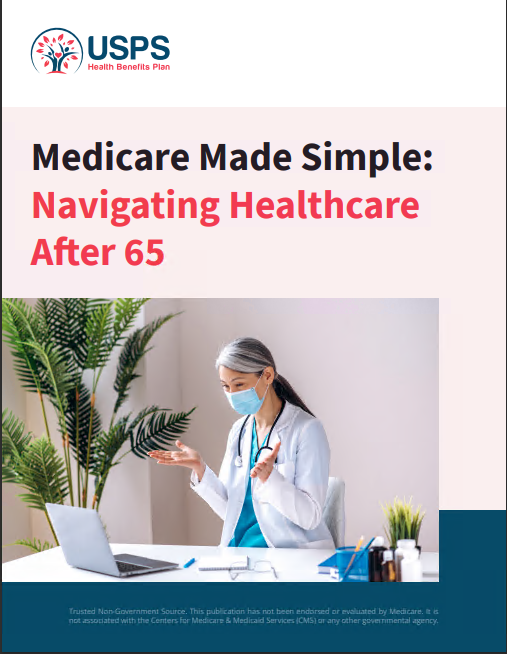Key Takeaways
-
Understanding how Medicare works with PSHB can help you lower your healthcare costs and expand your coverage options.
-
It’s essential to take proactive steps to align your Medicare and PSHB benefits for seamless integration and reduced out-of-pocket expenses.
Why Medicare Eligibility Matters for PSHB Participants
As a participant in the Postal Service Health Benefits (PSHB) program, becoming eligible for Medicare is a pivotal milestone. At age 65 or earlier in some cases (like qualifying for disability), Medicare becomes a primary player in your healthcare coverage. But how does it affect your PSHB benefits? By aligning the two programs, you can unlock significant savings and avoid gaps in coverage.
The Transition to Medicare: What to Know
When to Enroll in Medicare
For most people, Medicare eligibility begins at age 65. Your Initial Enrollment Period (IEP) starts three months before your 65th birthday, includes your birthday month, and extends three months afterward. Missing this window could mean late penalties, so mark your calendar well in advance.
If you’re still actively employed by USPS and covered under a PSHB plan, you might not need to enroll in Medicare right away. However, once you retire, Medicare becomes a crucial component of your healthcare.
Medicare Parts and Their Role with PSHB
Here’s a quick overview of Medicare’s parts and how they integrate with PSHB:
-
Part A (Hospital Insurance): Covers inpatient care and is usually premium-free if you’ve paid enough Medicare taxes. Enrolling in Part A is straightforward and provides additional coverage for hospital services.
-
Part B (Medical Insurance): Covers outpatient services like doctor visits and diagnostic tests. There’s a monthly premium for Part B, but coordinating it with PSHB can help lower out-of-pocket costs.
-
Part D (Prescription Drug Coverage): Helps cover the cost of medications. Many PSHB plans automatically include a Medicare Part D Employer Group Waiver Plan (EGWP), ensuring you get seamless drug coverage.
-
Medicare Advantage (Part C): While this is an alternative to Original Medicare, PSHB participants typically rely on their PSHB plans for comprehensive coverage.
Why Coordinating Medicare and PSHB Is Essential
Reduced Out-of-Pocket Costs
When Medicare becomes your primary insurer, PSHB acts as secondary coverage. This coordination can significantly lower your expenses by reducing deductibles, coinsurance, and copayments.
For example, if Medicare Part B covers 80% of a service, your PSHB plan can often cover the remaining 20%. This dual coverage minimizes your financial responsibilities and ensures peace of mind.
Enhanced Coverage Options
Medicare doesn’t cover everything—services like dental, vision, and some long-term care are excluded. Luckily, many PSHB plans include these supplemental benefits. By combining the two, you’ll enjoy broader healthcare coverage tailored to your needs.
Avoiding Penalties
If you don’t enroll in Medicare Part B when first eligible, you could face a lifetime late enrollment penalty. By integrating your Medicare and PSHB benefits on time, you’ll sidestep these unnecessary costs.
Steps to Take When You Become Medicare-Eligible
1. Evaluate Your Coverage
Start by reviewing your current PSHB plan and comparing it to your Medicare options. Check:
-
Does your PSHB plan coordinate well with Medicare?
-
Are there cost-saving opportunities by using both programs?
-
What are the out-of-pocket maximums for your current plan versus Medicare?
2. Enroll in Medicare Part A and B
Even if you’re still working, enrolling in Medicare Part A is usually a good idea since it’s premium-free for most people. Decide when to enroll in Part B based on your employment status and health needs. Retirees should enroll in both Part A and Part B immediately upon becoming eligible.
3. Review Prescription Drug Coverage
Many PSHB plans include a Medicare Part D component. Ensure your plan offers comprehensive drug coverage and confirms whether your medications are included in the formulary.
4. Notify Your Plan Administrator
Once enrolled in Medicare, inform your PSHB plan administrator. This step is critical to ensure proper coordination of benefits and avoid coverage lapses or billing errors.
Common Questions About Medicare and PSHB Integration
Do I Need Medicare Part B If I Have PSHB?
Yes, most PSHB retirees must enroll in Medicare Part B to maintain their PSHB coverage. Medicare Part B helps cover outpatient services, and many PSHB plans waive or reduce deductibles and coinsurance for those enrolled in Part B.
What Happens if I Delay Medicare Enrollment?
Delaying Medicare Part B enrollment could lead to late penalties and increased healthcare costs. Unless you’re actively employed and covered by a PSHB plan, it’s best to enroll as soon as you’re eligible.
How Do PSHB and Medicare Work Together?
Medicare typically pays first for covered services, while PSHB acts as secondary insurance. This setup reduces your overall costs and ensures comprehensive coverage for medical services and prescriptions.
Special Considerations for PSHB Participants
Retirees Before January 1, 2025
If you retired before this date, you are exempt from the mandatory Medicare Part B enrollment requirement. However, it’s still wise to explore the benefits of adding Medicare to your healthcare strategy.
High-Income Earners and IRMAA
If your income exceeds specific thresholds, you’ll pay more for Medicare Part B and Part D premiums under the Income-Related Monthly Adjustment Amount (IRMAA) rules. Review your income carefully and plan for these additional costs when budgeting.
Family Members and Dependents
PSHB coverage extends to eligible family members, but Medicare doesn’t. Ensure your dependents remain covered under a PSHB plan, as they can’t enroll in Medicare based on your eligibility.
Timelines to Remember
-
Initial Enrollment Period (IEP): A 7-month window starting three months before you turn 65.
-
Special Enrollment Period (SEP): Available if you’re still working and covered by a PSHB plan. This allows delayed enrollment in Part B without penalties.
-
Medicare General Enrollment Period (GEP): Runs annually from January 1 to March 31 for those who missed their initial or special enrollment period.
How to Make the Most of Your PSHB and Medicare Benefits
Stay Informed
Healthcare policies can change, and staying updated on PSHB and Medicare rules is vital. Review your plan’s Annual Notice of Change (ANOC) and attend USPS health fairs or webinars to stay informed.
Use Preventive Services
Both Medicare and PSHB cover many preventive services, such as screenings and vaccines, at no cost to you. Take advantage of these benefits to maintain your health and catch potential issues early.
Monitor Your Healthcare Expenses
Keep track of medical bills and out-of-pocket costs. This will help you assess whether your current Medicare and PSHB plans meet your needs or if you should consider making changes during the next Open Season.
Reassess During Open Season
The PSHB Open Season runs annually from November 11 to December 13. Use this time to review your options and make adjustments based on your healthcare needs and Medicare status.
Streamlining Your Healthcare Strategy
Maximizing your PSHB and Medicare benefits doesn’t have to be overwhelming. With a clear understanding of timelines, coverage options, and integration strategies, you can create a healthcare plan that works for you and your family. Being proactive now will save you from headaches and unexpected costs down the road.










